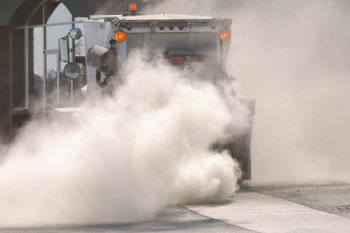
Hazard alert highlights a health-related concern about natural gas extraction.
The Occupational Safety and Health Administration (OSHA) and the National Institute for Occupational Safety and Health (NIOSH) recently issued a hazard alert related to drilling workers’ inhalation of silica dust, a byproduct of hydraulic fracturing, or “fracking,” through sand.
“It is important for employers and workers to understand the hazards associated with silica exposure in hydraulic fracturing operations and how to protect workers,” explained David Michaels, the Assistant Secretary of Labor for Occupational Safety and Health.
Breathing in fine silica dust can lead to silicosis, an incurable lung disease, according to the Centers for Disease Control and Prevention (CDC). Silicosis typically emerges after a lifetime of sand and dust inhalation, but it can also develop after only a few months of protracted exposure. Silica dust has also been linked to lung cancer, chronic pulmonary disease, kidney disease, and various autoimmune disorders.
Workers can breathe in fine silica particles when they work with the sand that plays an important role in fracking. Sand is mixed with water and other chemicals before being injected into natural gas wells, where it props open small cracks in the rock formation so that the gas can escape. Each fracking operation can involve hundreds of thousands of pounds of sand.
The government health alert comes on the heels of NIOSH research which concluded that 79 percent of 116 air samples from 11 fracking sites showed levels of silica higher than those recommended by OSHA. 47 percent had silica levels higher than the maximum permitted by OSHA, almost a third of the samples were more than 10 times higher than the recommended level, and one sample was 100 times that amount.
The hazard alert included statements of support from both the Association of Energy Service Companies, an industry group, and the AFL-CIO. The AFL-CIO had requested action to protect workers from silica in a letter sent to OSHA about a month before the alert was announced.



